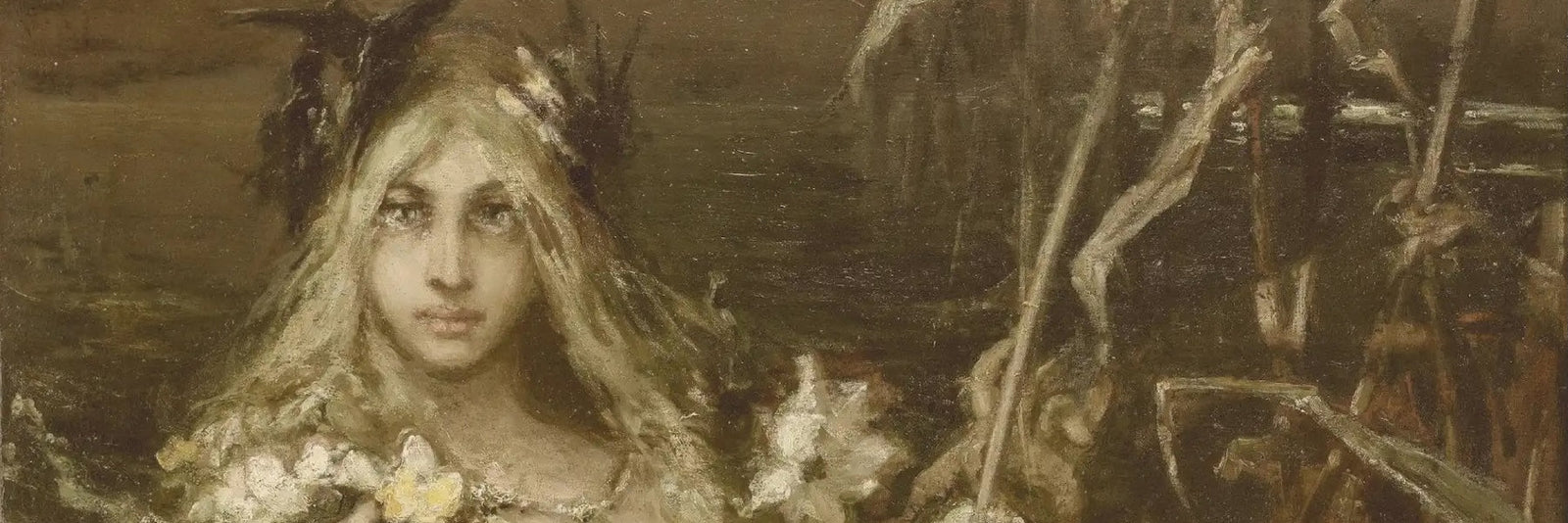What are the legends that have shaped the history of the Portuguese people? From generation to generation, stories are told and passed down. These tales feature chivalrous heroes, witches, enchanted Moors, mythological creatures, as well as kings and queens.
But what truths lie behind these stories? Does the past blend with myth? More than simple tales, these legends are a reflection of Portugal's history and beliefs.
The Lost Princess of the Moura Encantada
Drawn from Portuguese folklore, the figure of the Lost Princess of the Moura Encantada is a recurring theme, rooted in the time of Muslim occupation and the Christian Reconquista.
Once upon a time, in the warm and golden lands of southern Portugal, there lived young Moorish princesses of captivating beauty, only daughters of lords ruling over castles.

Moorish Castle in Sintra
When Christian armies approached to take back the land, the lords cast enchantments on their daughters to protect the kingdom's treasures. Transformed into supernatural beings, they became tied to mysterious places – ruins, caves, fountains, or remote hills – where they would sometimes appear as fairies, mermaids, or glowing women combing their long golden hair.

Appearance site of the Moura Encantada
Neither fully human nor entirely spirit, they became known as the “Moura Encantada,” the enchanted lady. Condemned to wander outside of time, they await a man with a pure heart and exceptional courage, capable of completing a challenge or act of faith to break the spell.

Moura Encantada - Credit Portugal Num Mappa
The “lost princess” is both a poetic and tragic figure, a symbol of a bygone past, a vanished culture, and an enchantment suspended between two worlds. Through her, Portugal keeps the melancholic echoes of its blended history—between East and West, myth and reality—alive.
The Ghost of Queen Inês de Castro
Once upon a time, there was a young lady-in-waiting at the Portuguese court named Inês de Castro. The crown prince, Dom Pedro, fell madly in love with her. Their love was deep, sincere, and burned like the sun on the stones of the monastery.

Dom Pedro & Inês de Castro
But the king, Dom Afonso IV, feared their union. He worried that Inês’s Castilian blood might disrupt the kingdom's balance. One morning in 1355, Inês was assassinated.
Legend has it that when Dom Pedro became king, he avenged her with icy fury. He had his assassins’ hearts ripped out and, in a mad gesture, exhumed Inês’s body, crowned her Queen of Portugal, and forced the nobles to kiss her skeletal hand as a sign of loyalty.

Coronation of Inês de Castro – Pierre-Charles Comte
He then commissioned two magnificent tombs at the Alcobaça Monastery, facing each other, so that he and his queen could meet with a single glance. It’s said that Inês’s soul never found peace.

Tomb of Inês de Castro
For centuries, her ghost is said to still haunt Coimbra. They say she cries. That she searches for her children. That she still sings, her voice as sad as the winter wind. The legend of the Ghost of Inês de Castro is the symbol of eternal, cursed love and unjust power.
The Cursed Monastery of Sintra
The tale of the “Cursed Monastery of Sintra” is not a single established legend in Portuguese folklore. The unique and sometimes mysterious atmosphere of Sintra, along with the history of its religious buildings, may have given rise to rumors, isolated stories, or local interpretations perceived as hauntings or curses.
Hidden deep in the misty forests of Sintra lies an ancient convent weathered by time: the Monastery of the Capuchos. It’s sometimes called the Cursed Monastery.

Convento dos Capuchos – Photo José Marques Silva
This forgotten site, nestled in the mossy folds of the mountain, once sheltered friars in search of silence and penance. But legend says the silence was broken, a vow was betrayed, and since that day, darkness never left the place.
Some claim to have seen motionless figures at the turn of a stone corridor, or to have heard whispered prayers in a language only the wind still understands, echoing from the lichen-covered walls.

Convento dos Capuchos
There is no single story, no name etched in the chronicles of the kingdom—only fleeting impressions, unexplained chills, and the sense of a presence watching from behind.
This monastery, without a specific legend or named ghost, might be the most chilling of all—because it leaves the imagination free to invent its own curse, in the heart of Sintra’s green mystery.
The Vanished Island of São Brandão
The legend of the Vanished Island of São Brandão—also known as Saint Brendan's Island or the Blessed Island—drifts like a mirage through the mists of maritime imagination.
It is neither a fixed myth nor a precise tale, but rather a story that has crossed centuries, blurring the line between reality and illusion.
It is said that it appeared to those brave enough to venture into the Atlantic—an island where lush vegetation touched the sky and fruit was offered like a promise of paradise. Yet the island always slipped away from sailors, vanishing as suddenly as it emerged, lost in the fog or swallowed by the waves.
Marked on old maps, it attracted explorers and adventurers, all eager to discover this promised land, but none ever did. Over time, the myth grew into a spiritual and mystical quest—somewhere between mirage and revelation.

São Brandão – Map by the Pizagni brothers, 1707
Today, São Brandão’s Island no longer appears on nautical charts, but it continues to drift through legends—like a phantom isle leaving behind a trail of mystery, inviting the imagination, and carving a lasting mark in the great book of maritime dreams.
Some say it was Atlantis. Others claim it only appears to sailors with pure hearts.
The Cursed Treasure of the Templars of Tomar
The legend of the "Cursed Treasure of the Templars of Tomar" is a mystery woven around the aura of an ancient and powerful Order. While there is no specific tale about a cursed treasure hidden within the walls of the Convento de Cristo, the Templars’ supposed wealth and historical presence in Tomar have long fueled the popular imagination.

Castelo de Tomar
The Order of the Temple, vast and discreet in its dealings, possessed treasures from its conquests that are believed to have vanished. This missing wealth has fascinated generations and become an obsession for some.
In Portugal, the transition from the Order of the Temple to the more discreet Order of Christ gave rise to speculation that secrets and riches may have been hidden in Tomar. The Convento de Cristo, with its symbol-covered stones and enigmatic architecture, is fertile ground for theories and legend. And though no treasure hunter has ever found this hidden fortune, rumors of a curse have thrived.

Convento de Cristo – Tomar
These stories seep into people’s minds, and the search for the unknown treasure becomes a mythical quest—a silent warning to the curious: some secrets are better left buried, protected by the veil of mystery and sacred history.
Portuguese folklore is full of legends. Some are rooted in real history, while others are simply the result of interpretations or the collective imagination of a time when magic and mystery felt more real than they do today.
Still, these stories have shaped the history of the Portuguese people—and, by extension, their customs and beliefs.

